RNR 433 final exam
1/28
There's no tags or description
Looks like no tags are added yet.
Name | Mastery | Learn | Test | Matching | Spaced |
|---|
No study sessions yet.
29 Terms
what are fire avoiders?
-species not regularly challenged by fire
-little to no fire adapted traits + thin bark
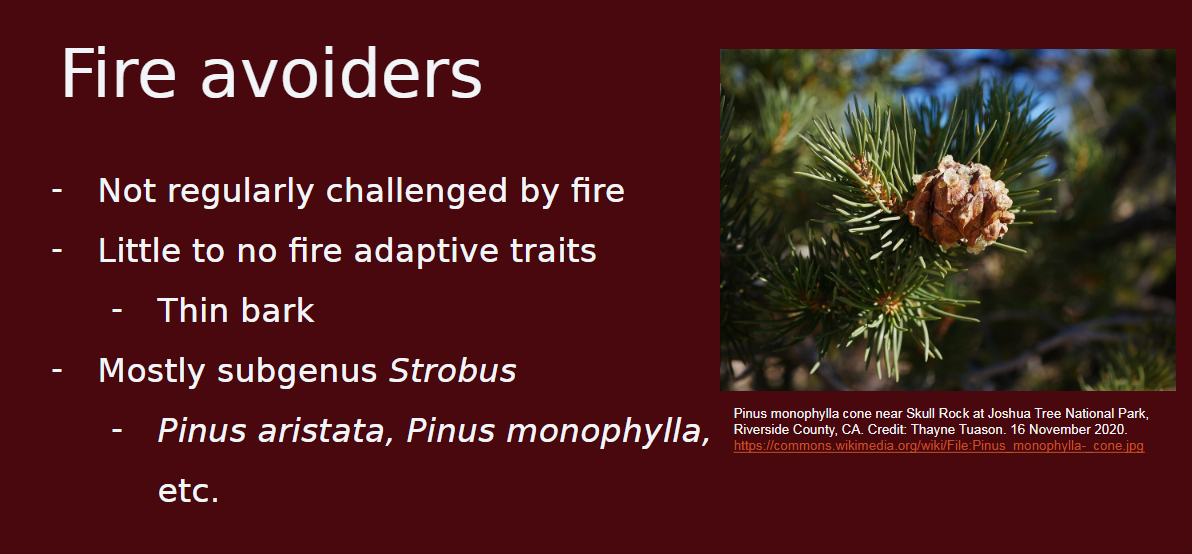
what are fire tolerators?
-regular exposure to surface fires
-traits for minimizing potential of crown fires: selection for large height, thick bark, long needles, and self-prunning of dead branches
-early life is incredibly risky and some species require forest gaps to reach adulthood
-grass stage in some species (cluster of needles that protect apical meristem, 5-10 years)
-ponderosa pine
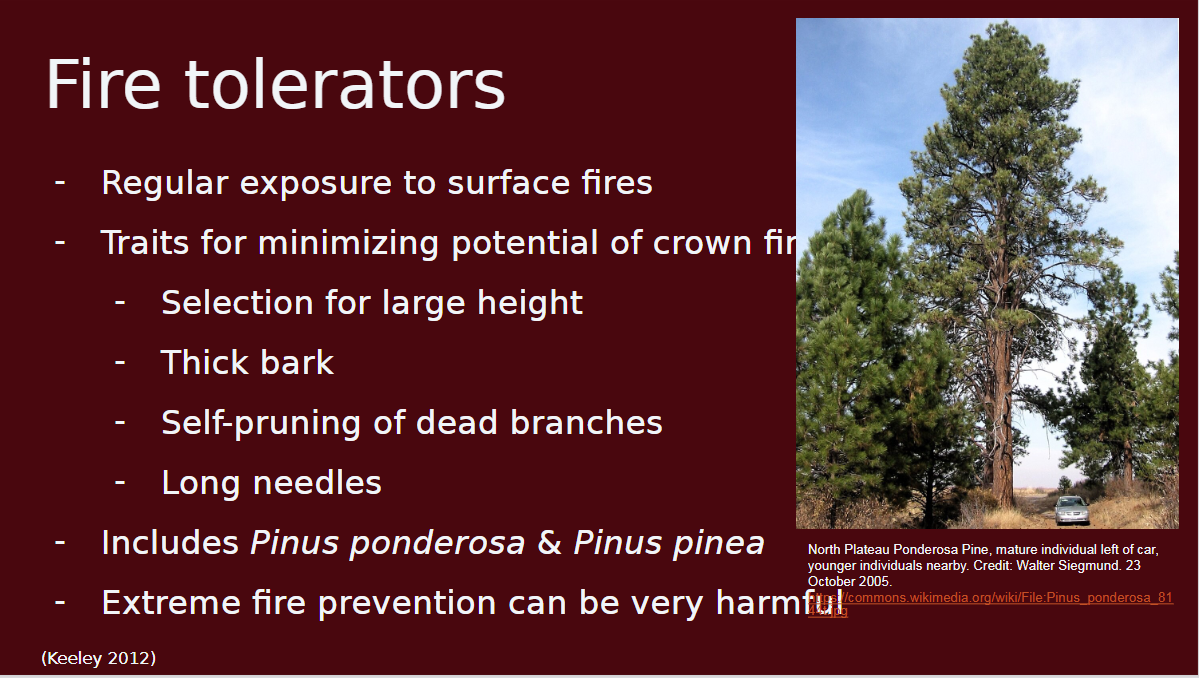
what are fire embracers?
-experience regular exposure to intense crown fires
-serotiny: seed cones open up after fire
-traits for maximizing crown fire potential: retention of dead branches and short needles that promote longer fires
-lodgepole pines
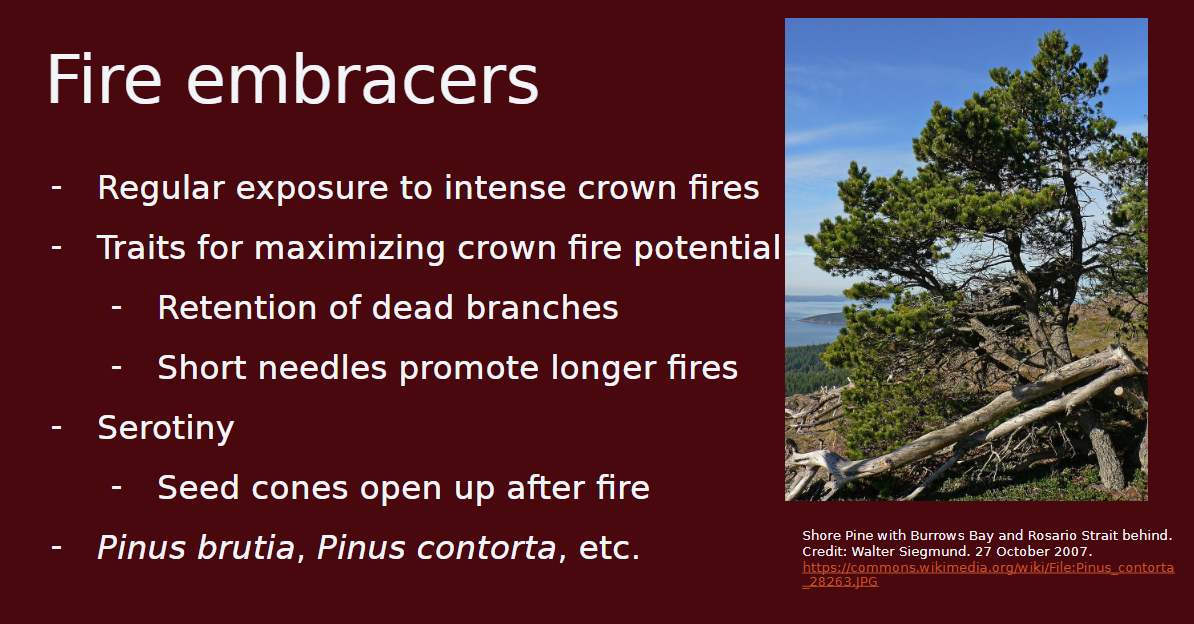
how has the historical fire intensity and frequency changed?
historical fires were much more frequent and we’re very intense compared to what they are now
what is the fire deficit?
the difference between historical burn extent (area burned) and the actual current, burn extent which is much less than what the historical burn “norm” was
-we essentially are in debt to fire within ecosystems due to suppression (climate change is also driving this fire deficit)
what is the evidence for the fire deficit?
looking at previous fire scars from tree ring data which shows us from the trees that survived, fires were much more frequent than they are now
at sites where trees historically survived many fires over centuries, how many trees experienced mortality with another fire?
42%
what are traits/adaptations that allow trees to tolerate adverse conditions rather than collapsing?
-avoidance (don’t grow in areas with frequent fires)
-have thick bark
-pruning (losing branches near the bottom of the stem to remove the “fuel latter”)
-resprouting (once “whipped out”, trees can fully resprout from the same location)
what are mechanisms that facilitate recovery (establishment of new individuals via seed dispersal, regeneration, and growth)?
seed banks, serotiny, advance regeneration, dispersal and competition
what is transient reorganization?
occurs when the recovery of an ecosystem fails which leads to an alternate state where we can’t go back to our pre-disturbance assemblage
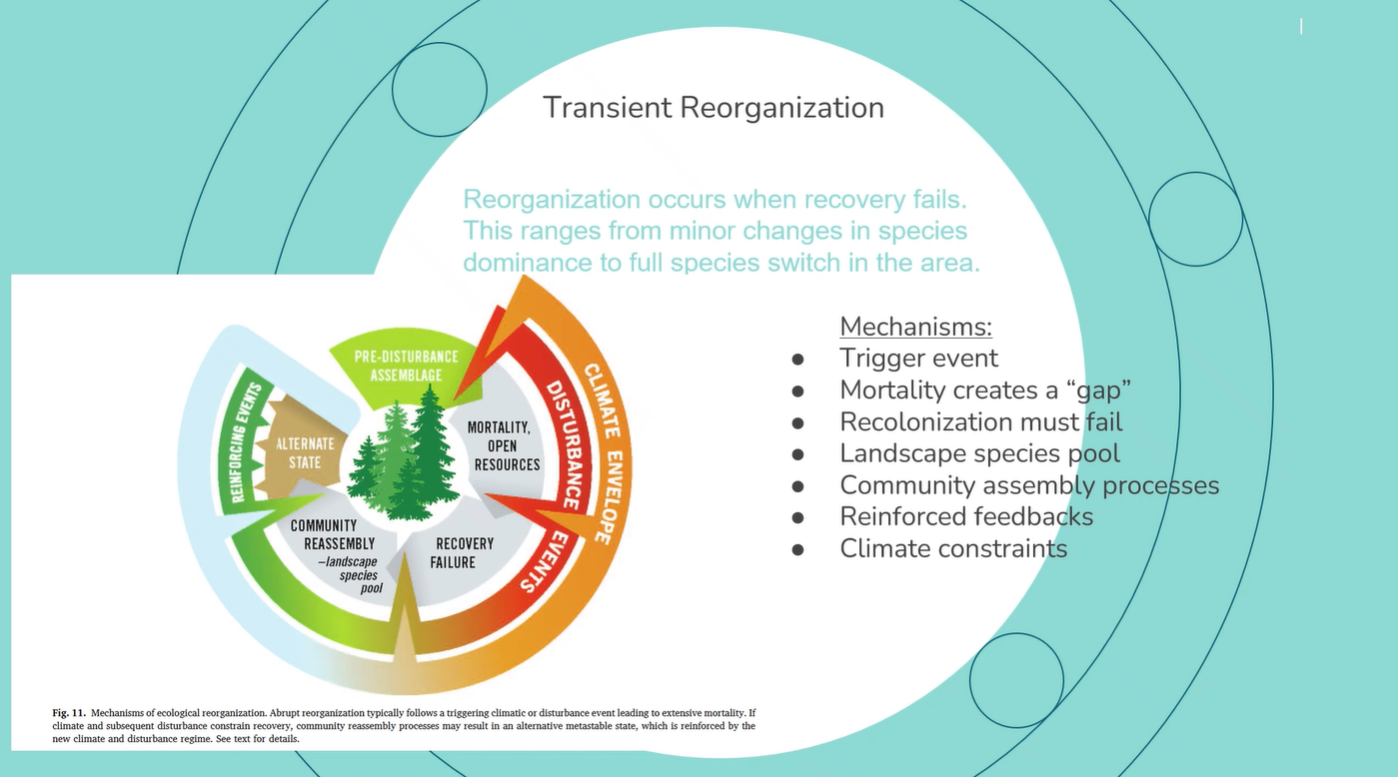
what is the most extreme case of reorganization?
vegetation conversion: a complete change from one functional vegetation type to another (forest —> grassland)
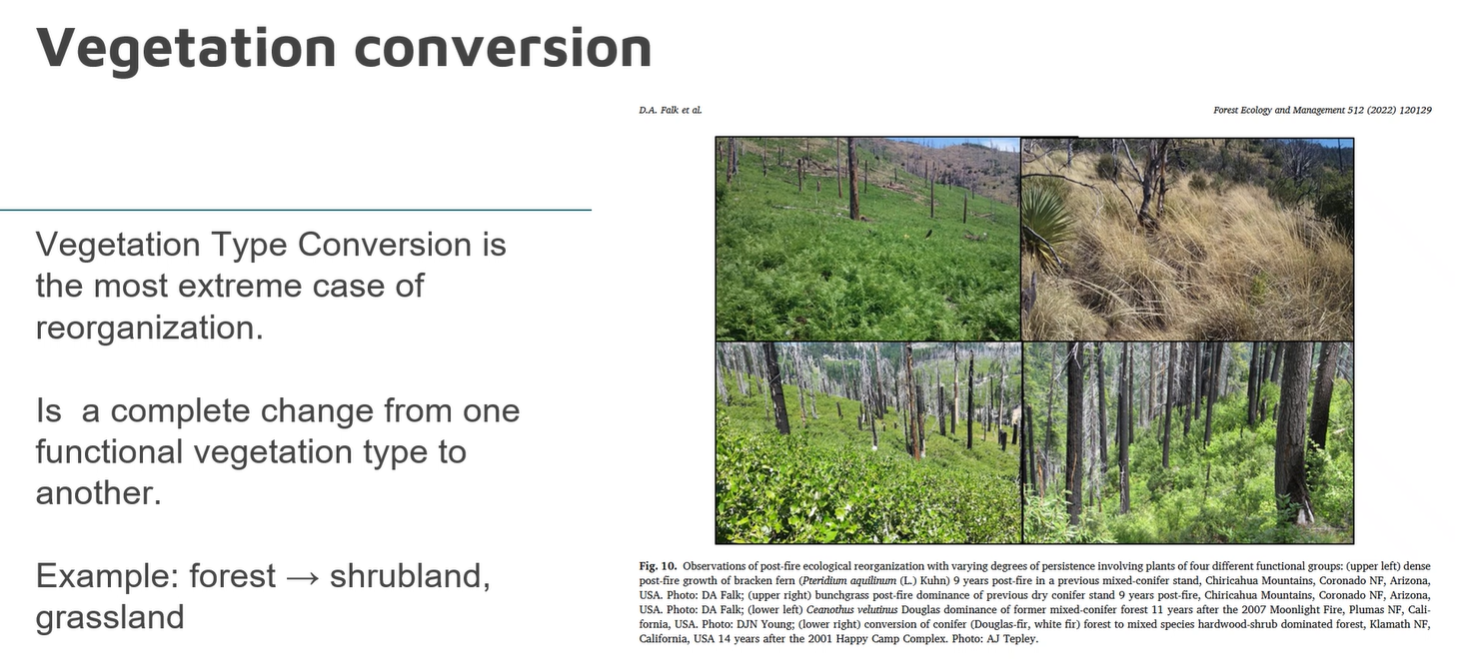
what is the spectrum of fire regimes?
high to low frequency and high to low severity
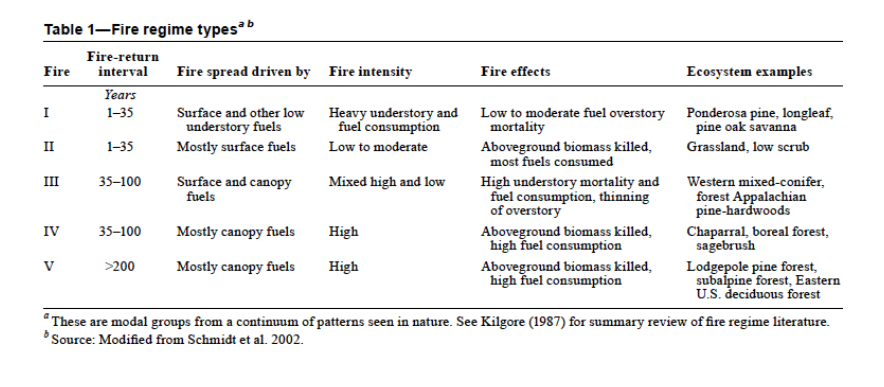
what does fire suppression do?
in the past, tree saplings wouldn’t be able to grow into a mature tree because frequent, low-intensity fires would whip them out and decease the density of the forest floor, beneath the large canopy
now, with low-intensity fires being suppressed, those tree saplings are able to grow into teenager trees that touch the canopy of the adult trees and create a fuel ladder. thus, when a fire does begin, it has fuel from the ground all the way up to the crown of forest and it turns it from a low-intensity fire to a high-severity, crown fire that is stand replacing
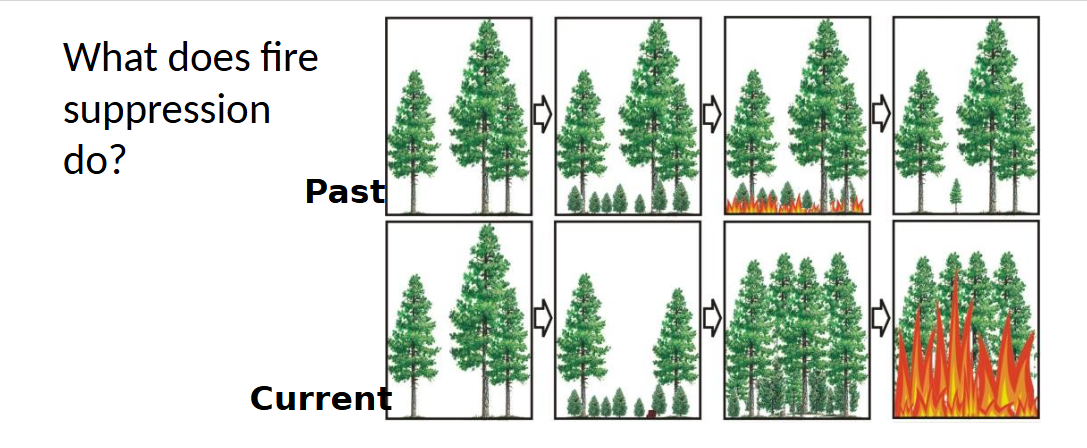
what forest types are especially negatively impacted by fire suppression?
-forests that used to have frequent, low-intensity fires every ~5-7 years
-ponderosa pine, oak woodlands, dry mixed conifers and moist mixed conifers
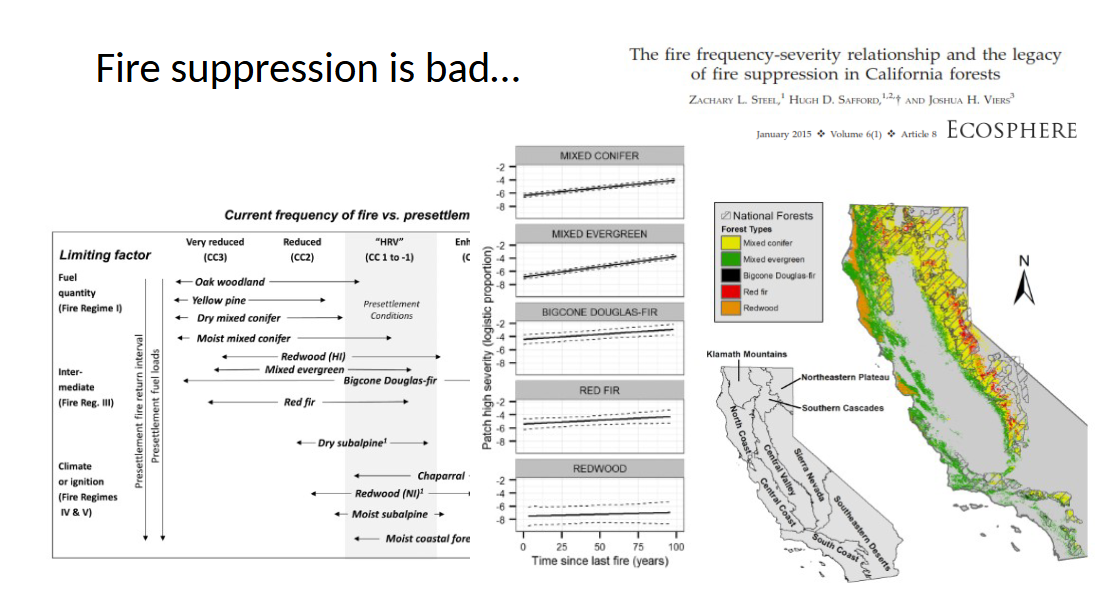
how does climate change contribute to the forest fire problem?
-less snow, earlier snowmelt, forests dry out earlier, fire season starts earlier
-more extreme drought conditions and warmer temperatures = drier fuel conditions = more extreme and more frequent fires
-stronger winds also create much larger, more catastrophic fires
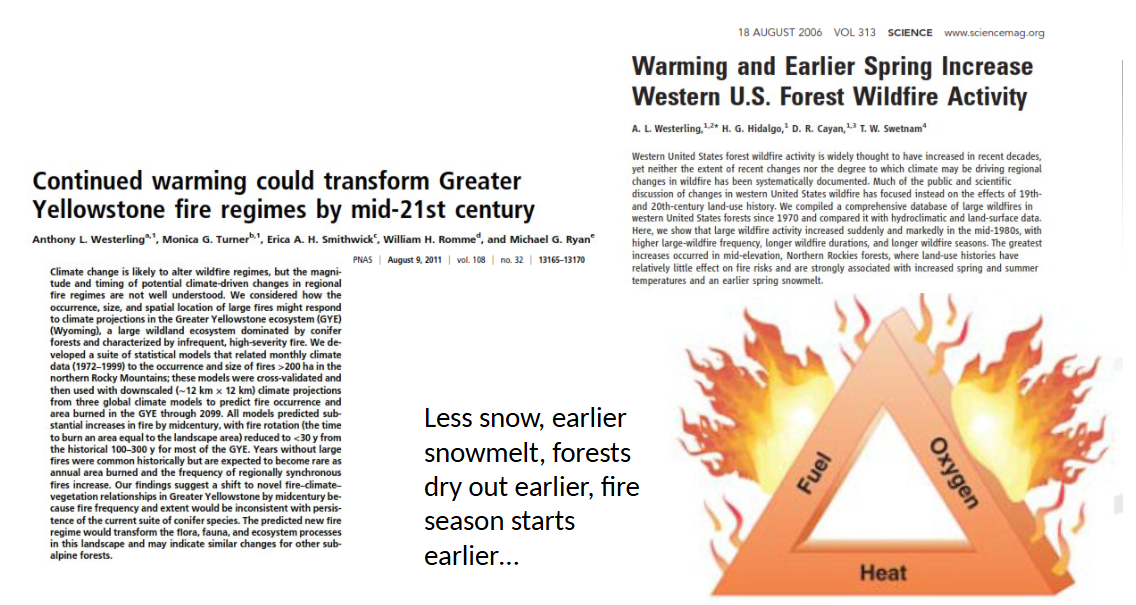
what is a fire regime?
a way to categorize a fire based on the average severity (= %mortality), intensity (= temp), frequency, seasonality, extent (scale, patch size), and duration
describe variation in historical, natural fire regimes (general patterns) across forests of western North America
-historical, natural fire regimes has much more
-ponderosa pine ecosystems used to have frequent, low severity fires
-lodgepole pine (+subalpine forests (fir, aspen, and spruce)) ecosystems used to have low frequency, high severity fires (aspen are always first to colonize after fires)
-chaparral ecosystems have high severity and high frequency fire regimes and those plants re-sprout from the same belowground biomass
what is a pathogen?
-microscopic organisms typically causing disease or injury to the host organism
-viruses, bacteria, fungi, protozoa, prions and worms
-increasing frequency due to climate change
what are the effects of pathogens on forests?
-small-scale mortality
-large scale mortality
-affects soil moisture and temperature
-create gaps in the forest crown
-affect richness and diversity of other plants and animals
what are typical symptoms of pathogens?
-cankers
-leaf spots, wilt and defoliation
-root rot :(
what are forest defenses against pathogens?
waxy cuticle, antimicrobial coatings, stomatal regulation, bark composition, tissue lignification, and genetic regulation
how does drought affect trees’ ability to fight off insect pests?
drought reduces water availability for the creation of sap which is a sticky resin that trees produce in order to fight off insect pests
what are some invasive pests and pathogens that harm forests?
-emerald ash borer beetle
-gypsy moth (spongy moth)
-brown spot needle blight (fungus sp.)
-native: mountain bark beetle
how do humans impact insects pests in forest ecosystems?
humans make the temperatures warmer and the summers longer which creates longer seasons for insect growth and reproduction which leads to more insect activity and harm to forests. warming temperatures also creates shorter generation and growth time so populations can grow larger
how much more forest area is impacted by insects and pathogens as compared to fire?
45x more than fire impacts
in the western US, what disturbances are the most prominent?
fire and insects (bark beetles esp.)
-eastern: timber harvest
what forest type is most impacted by fire disturbances?
boreal forests (due to warmer temps causing increased snowmelt = earlier and drier summers and fuel = longer fire seasons and more area susceptible to being burned)